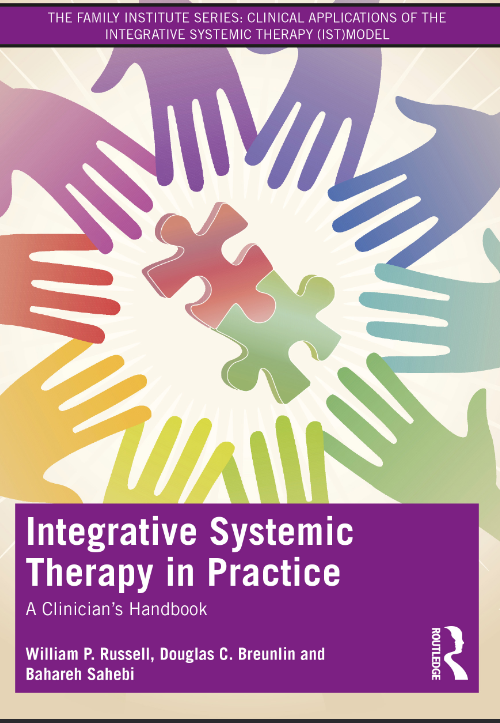The field of psychotherapy contains an overwhelming amount of informa- tion about human functioning, theories of change, common factors, clinical models, evidence-based treatments, and clinical competencies. Therapists face the significant challenge of determining how to effectively utilize the extant ideas, models and interventions available to them. They do so in the context of their work with unique client systems that present a broad variety of problems that are maintained by factors ranging from mere lack of in- formation to complex and challenging networks of constraints. Therapists struggle with how to organize and utilize the available knowledge and in- terventions, as well as how to plan and sequence therapy. Therapists who practice within a specific model struggle with what to do when the strategies and interventions of that model do not address the concerns of their clients. Eclectic therapists struggle to find a coherent means of organizing their work—a set of principles to help them decide what to do and when to do it. This confusing and sometimes overwhelming experience that individual clinicians face presents, in the collective, a developmental challenge for the field. Integrative Systemic Therapy (IST) is a meta-level systemic perspective that addresses this challenge by providing a means of in- tegrating the vast and diverse field of knowledge about human systems, their problems, and the therapeutic models and interventions that have emerged to address them (Russell & Breunlin, 2019; Pinsof et al., 2018; Breunlin et al., 2018). IST is an integrative and systemic perspective for individual, couple, and family psychotherapy that provides a framework for transcending the specific models of therapy and accessing their con- cepts and interventions to meet the particular needs of specific cases. It is a comprehensive perspective in that it can be applied to a wide range of client concerns (problems, aspirations, symptoms, and disorders). IST has its roots in the work of Douglas Breunlin and his colleagues on Metaframeworks (Breunlin et al., 1992) and the work of William Pinsof on Integrative Problem Centered Therapy (Pinsof, 1995
چکیده فارسی
حوزه روان درمانی حاوی اطلاعات زیادی در مورد عملکرد انسان، نظریه های تغییر، عوامل مشترک، مدل های بالینی، درمان های مبتنی بر شواهد و شایستگی های بالینی است. درمانگران با چالش مهم تعیین چگونگی استفاده مؤثر از ایدهها، مدلها و مداخلات موجود روبرو هستند. آنها این کار را در چارچوب کار خود با سیستمهای مشتری منحصربهفرد انجام میدهند که طیف گستردهای از مشکلات را ارائه میدهند که توسط عواملی از فقدان اطلاعات صرف تا شبکههای پیچیده و چالش برانگیز از محدودیتها حفظ میشوند. درمانگران با نحوه سازماندهی و استفاده از دانش و مداخلات موجود، و همچنین نحوه برنامه ریزی و ترتیب درمانی مبارزه می کنند. درمانگرانی که در یک مدل خاص تمرین میکنند با این که وقتی استراتژیها و مداخلات آن مدل به نگرانیهای مراجعانشان نمیپردازد، چه کاری باید انجام دهند، دست و پنجه نرم میکنند. درمانگران التقاطی تلاش می کنند تا ابزاری منسجم برای سازماندهی کار خود بیابند - مجموعه ای از اصول که به آنها کمک می کند تصمیم بگیرند چه کاری و چه زمانی انجام دهند. این تجربه گیجکننده و گاه طاقتفرسا که پزشکان فردی با آن مواجه هستند، در مجموع، یک چالش توسعهای برای این رشته است. درمان سیستمیک یکپارچه (IST) یک دیدگاه سیستمی فراسطحی است که با ارائه ابزاری برای ادغام حوزه وسیع و متنوع دانش در مورد سیستم های انسانی، مشکلات آنها و مدل های درمانی و مداخلاتی که برای رسیدگی به آن پدیدار شده اند، به این چالش می پردازد. آنها (راسل و برونلین، 2019؛ پینسوف و همکاران، 2018؛ برونلین و همکاران، 2018). IST یک دیدگاه یکپارچه و سیستمی برای روان درمانی فردی، زوجی و خانواده است که چارچوبی را برای فراتر رفتن از مدل های خاص درمان و دسترسی به مفاهیم و مداخلات آنها برای رفع نیازهای خاص موارد خاص فراهم می کند. این یک دیدگاه جامع است که می تواند برای طیف گسترده ای از نگرانی های مشتری (مشکلات، آرزوها، علائم و اختلالات) اعمال شود. IST ریشه در کار داگلاس برونلین و همکارانش در متافریم ورکز (برونلین و همکاران، 1992) و کار ویلیام پینسوف در مورد درمان یکپارچه مشکل محور دارد (پینسوف، 1995
ادامه ...
بستن ...
Author(s): William P. Russell, Douglas C. Breunlin, Bahareh Sahebi
Series: The Family Institute Series: Clinical Applications of the Integrative Systemic Therapy (IST) Model
Publisher: Routledge, Year: 2022
ISBN: 9780367338381,9780367338398,9780429322273
ادامه ...
بستن ...










